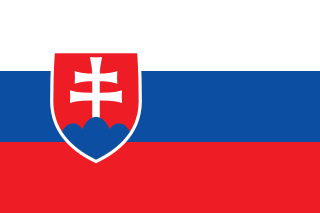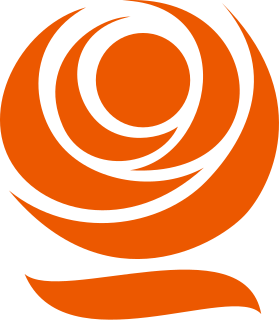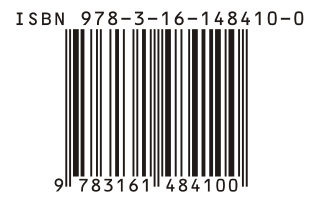Union was a central trade union organization of Hungarian and German workers in Slovakia. As of early 1920 Union claimed a membership of around 40,000 workers in southwestern Slovakia. [1] Gyula Nagy, an important figure in the leftwing in Slovakia at the time, was the secretary of Union (as well as the Agricultural Labourers Union of Southwestern Slovakia and a parliamentarian of the Hungarian-German Social Democratic Party). [2] [3] Union had a strong presence amongst agricultural labourers. [4] The organization was linked to the Hungarian-German Social Democratic Party. [5]
A trade union, also called a labour union or labor union (US), is an association of workers in a particular trade, industry, or company created for the purpose of securing improvement in pay, benefits, working conditions or social and political status through collective bargaining and working conditions through the increased bargaining power wielded by creation of a monopoly of the workers. The trade union, through its leadership, bargains with the employer on behalf of union members and negotiates labour contracts with employers. The most common purpose of these associations or unions is "maintaining or improving the conditions of their employment". This may include the negotiation of wages, work rules, complaint procedures, rules governing hiring, firing and promotion of workers, benefits, workplace safety and policies.

Slovakia, officially the Slovak Republic, is a landlocked country in Central Europe. It is bordered by Poland to the north, Ukraine to the east, Hungary to the south, Austria to the west, and the Czech Republic to the northwest. Slovakia's territory spans about 49,000 square kilometres (19,000 sq mi) and is mostly mountainous. The population is over 5.4 million and consists mostly of Slovaks. The capital and largest city is Bratislava, and the second largest city is Košice. The official language is Slovak.
The Agricultural Labourers Union of Southwestern Slovakia was a trade union of Hungarian agricultural labourers in Slovakia. It was affiliated to the Hungarian-German trade union council Union. Gyula Nagy, an important figure in the leftwing in Slovakia at the time, was the secretary of the Agricultural Labourers Union.
The organization emerged after the end of the First World War as a continuation of the German-Hungarian Gewerkschaftskartell ('Trade Union Council'). [6] A congress of Hungarian and German trade unions of the Bratislava region was held September 28–30, 1919. The foundation had initially been planned for March 21, 1919, but had been postponed with the intention to await the emergence of a better environment for cooperation with the Slovak trade unions. Ahead of the September 1919 congress, however, the Slovak Executive Committee of the Czechoslovak Trade Union Association had initially called upon its affiliates not to attend. The Czechoslovak Trade Union Association unions had been invited to the congress in order to discuss the possibilities for joint action. In the end the leadership of the Czechoslovak Social Democratic Labour Party intervened, and the Slovak Executive Committee of the Czechoslovak Trade Union Association withdrew its previous decision. Both the Czechoslovak Social Democratic Labour Party and the Czechoslovak Trade Union Association had representatives attending the founding congress of Union. [6] The congress resolved that the goal of the organization would be to seek unity of the trade union movement in Slovakia on territorial basis within the Czechoslovak Trade Union Association. A special commission to examine the possibilities of a merger between Union and the Czechoslovak Trade Union Association was formed at the congress, with participants from both organizations. Union did however remain opposed to immediate unification with the Slovak trade unions, seeking a large degree of autonomy in the short term. Union applied for registration on October 25, 1919. [7]

Bratislava is the capital of Slovakia. With a population of about 430,000, it is one of the smaller capitals of Europe but still the country's largest city. The greater metropolitan area is home to more than 650,000 people. Bratislava is in southwestern Slovakia, occupying both banks of the River Danube and the left bank of the River Morava. Bordering Austria and Hungary, it is the only national capital that borders two sovereign states.
Czechoslovak Trade Union Association, abbreviated to OSČ, was a national trade union center, founded in 1897 in what was then the Austro-Hungarian Empire. With the break-up of the empire, the OSČ emerged as the major trade union force in Czechoslovakia up to the Second World War.

The Czech Social Democratic Party is a social-democratic political party in the Czech Republic. It holds 15 seats in the Chamber of Deputies following the 2017 legislative election, losing 35 seats. The party has been led by Jan Hamáček since 2018. It has been a junior coalition party within a minority cabinet since June 2018, and was a senior coalition party from 1998 to 2006 and from 2013 to 2017.
Union sent representatives to the Slovak congress of the Czechoslovak Trade Union Association held in Piešťany January 6–8, 1920. At the congress the Union representatives retained that they considered unification 'premature'. [1]

Piešťany is a town in Slovakia. It is located in the western part of the country within the Trnava Region and is the seat of its own district. It is the biggest and best known spa town in Slovakia and has around 30,000 inhabitants (2012).
On March 14, 1920, an extraordinary congress of Union was held in Žilina. The Czechoslovak Trade Union Association, the Czechoslovak Social Democratic Labour Party and the Bohemian German Gewerkschaftsbund sent representatives to the congress. At the Žilina congress, the leftist tendency had a strong presence. The congress was held with the intention of prevention factional conflicts between the communist and moderate wings of the movement. [4]

Žilina is a city in north-western Slovakia, around 200 kilometres (120 mi) from the capital Bratislava, close to both the Czech and Polish borders. It is the fourth largest city of Slovakia with a population of approximately 85,000, an important industrial center, the largest city on the Váh river, and the seat of a kraj and of an okres. It belongs to the Upper Váh region of tourism.
Zentralgewerkschaftskommission des Deutschen Gewerkschaftsbundes in der Tschechoslowakischen Republik was a German Social Democratic trade union centre in Czechoslovakia. From 1927 onwards, it was an autonomous structure inside the Czechoslovak labour centre OSČ. The organization was dissolved as Czechoslovakia fell under German occupation.
Union held a congress on September 5, 1920, in Bratislava which called for unification with the Czechoslovak Trade Union Association 'on the platform of the Third International'. This move was rejected by the social democratic leaders of the Hungarian-German labour movement, though. Implementation was unrealistic anyway, as the communists remained a minority within the Czechoslovak Trade Union Association. Nevertheless, discussions on unification followed and by the end of September 1920 Union decided to merge into the Czechoslovak organization. The merger was effective in early 1921. Around 30,000 Hungarian and German workers joined the Slovak branch of the Czechoslovak Trade Union Association. However, many of them soon left as the communists formed a trade union centre of their own. [8]





